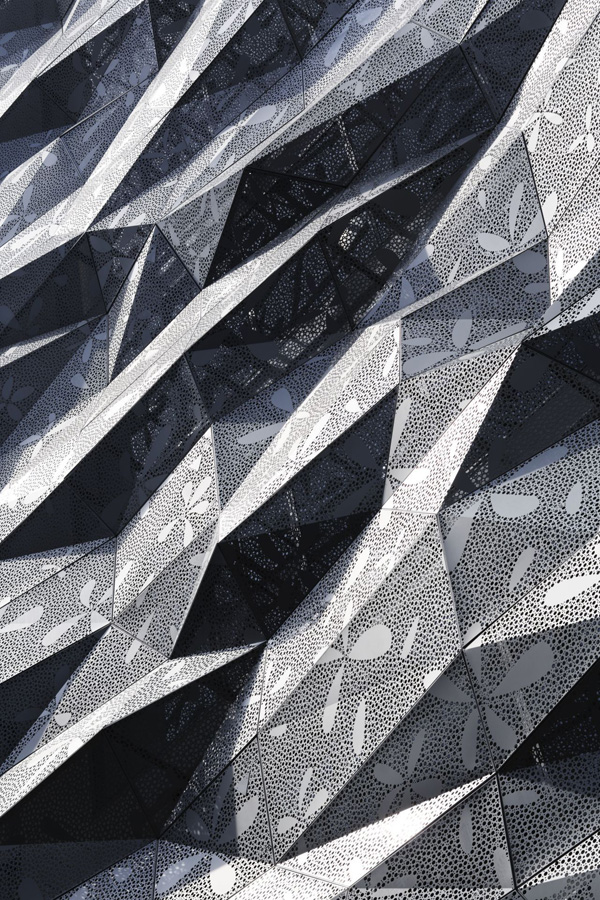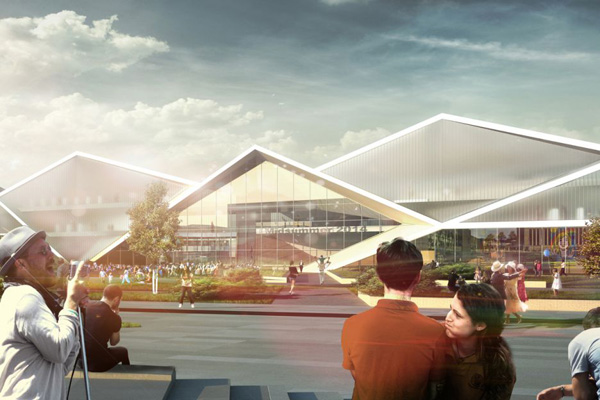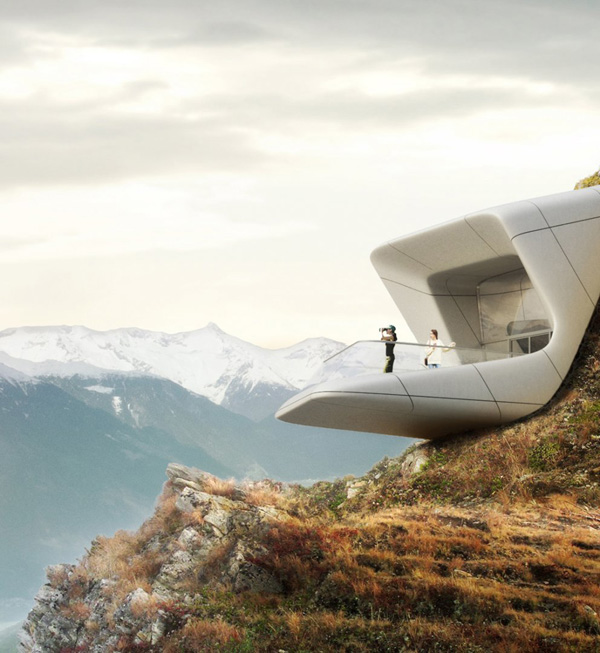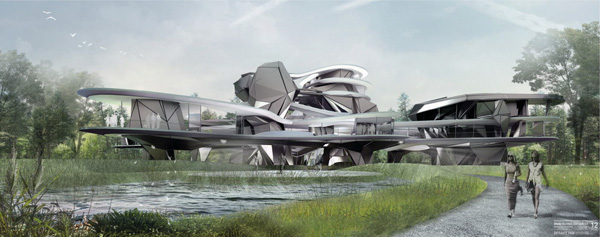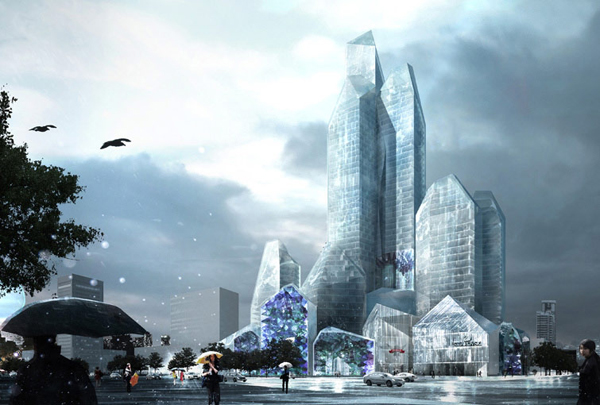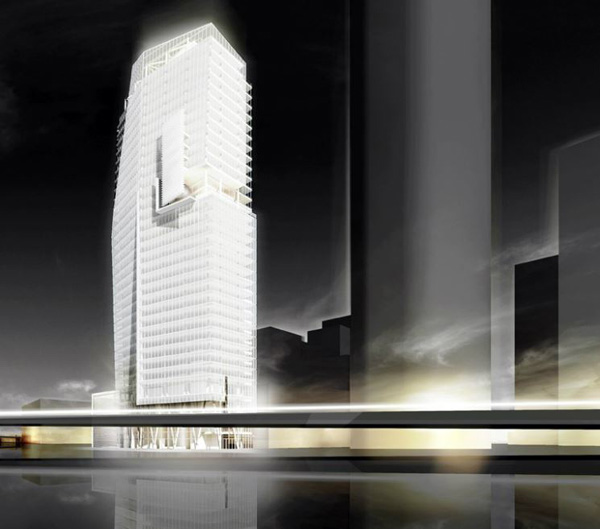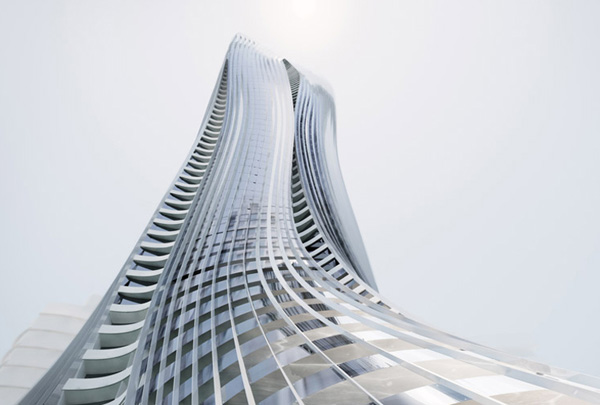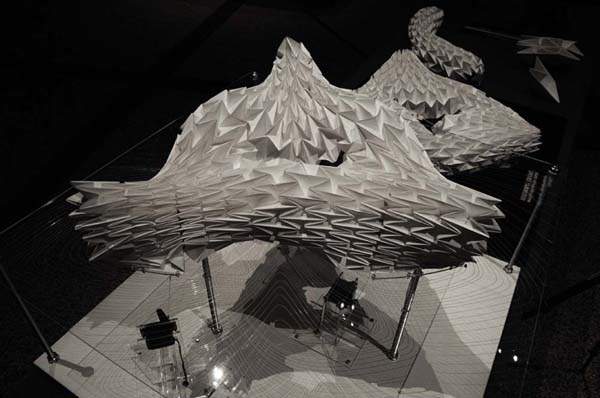The client for this filigree-façade building by Amano Design, located in Ginza Central Street of Tokyo is a developer company. The company purchased a long-sought after lot in Ginza, and planned to build a commercial, office building. The atmosphere is quite different from the gorgeous Central Street, and the site is on an empty street which is often seen behind the street with large-sized buildings. Attracting as many people as possible into such a street is our task. As they state in Amano Design Office, the client desired the building to be a gorgeous existence. In addition, the designer desired to provide a “slight feeling of strangeness” to the passersby that would attract them to the building.
Due to the fact that the street scenery is hectic, a double skin structure for the façade is employed, consisting of glass curtain walls and graphically treated aluminum punched metal. The façade therefore becomes a part of the interior decoration and obviates the need for window treatments such as blinds or curtains. By using a double skin, reduction of the air conditioning load and the glass cleaning burden was also intended. Read the rest of this entry »

